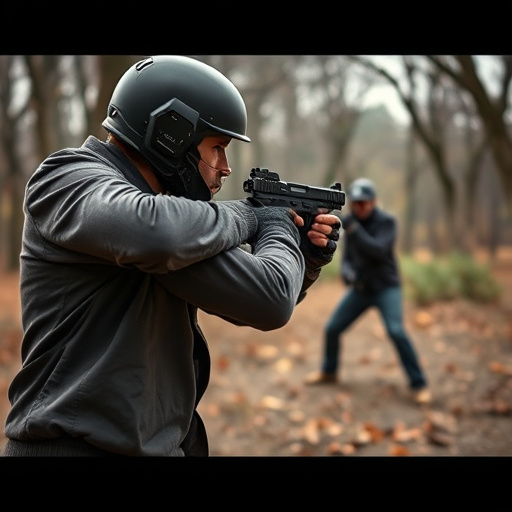The legal status of compact stun guns with flashlights varies across U.S. states, influenced by interpretations of self-defense, concealed weapons, and device safety laws. These variations impact age restrictions, use, carry rules, battery life, and voltage output. Understanding state-specific regulations is crucial for compliance and personal security when considering the purchase and ownership of these devices. Shifting societal attitudes towards non-violent conflict resolution could lead to more uniform state legislation in the future.
“Unraveling the legal complexities surrounding compact stun guns with flashlights is essential for every aware citizen. This comprehensive guide, ‘Stun Gun Legal Restrictions by State’, offers an in-depth look at the state-by-state regulations that dictate your rights to carry these self-defense devices. From understanding the legal landscape to exploring key factors influencing legality and predicting future trends, this article equips you with vital knowledge. Stay informed about your rights and responsibilities regarding compact stun guns with flashlights.”
- Understanding Stun Gun Regulations: A Comprehensive Overview
- The Legal Landscape: State-by-State Restrictions on Compact Stun Guns with Flashlight
- Key Factors Influencing Legality: Exploring the Legal Considerations
- Rights and Responsibilities of Citizens: What You Need to Know
- Future Trends: Predictions for Changes in Stun Gun Laws
Understanding Stun Gun Regulations: A Comprehensive Overview
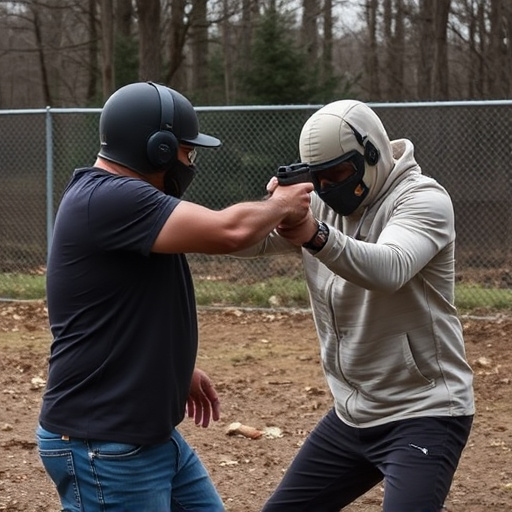
Understanding Stun Gun Regulations: A Comprehensive Overview
In the United States, stun guns, also known as electronic control devices (ECDs), are subject to varying legal restrictions across different states. These regulations can differ significantly based on factors such as intended use, size, and features like a built-in flashlight. Compact stun guns with flashlight, for instance, may face unique considerations due to their portability and added utility. Some states allow citizens to carry stun guns without a permit, while others mandate specific licenses or registration. Additionally, there are restrictions on where these devices can be carried—for example, in schools, courts, or certain types of businesses.
State laws also dictate the age at which one can legally purchase and possess a stun gun, with some states setting the bar as high as 21 years old. Moreover, regulations cover aspects like battery life, voltage output, and safety features required for these devices to be considered legal. It’s crucial for individuals considering carrying a stun gun to understand their state’s specific laws to ensure compliance and personal safety.
The Legal Landscape: State-by-State Restrictions on Compact Stun Guns with Flashlight
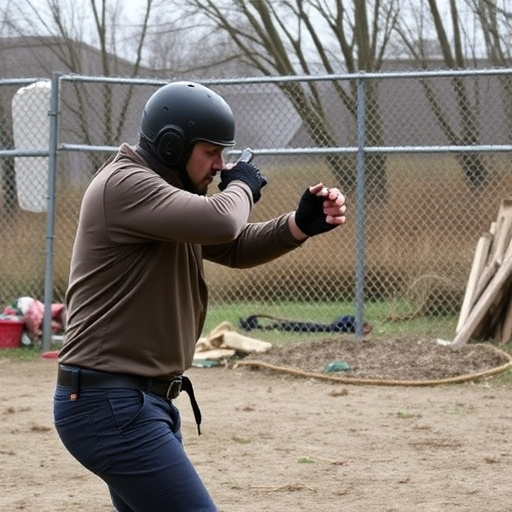
The legal status of compact stun guns equipped with flashlights varies significantly across the United States, reflecting a complex web of state and local regulations. In some states, these devices are entirely banned, while others allow their possession with certain restrictions. The variations stem from differing interpretations of laws regarding self-defense, concealed weapons, and device safety.
For instance, many states classify stun guns as “less-lethal” weapons, subject to additional regulations beyond standard firearms. Some require permits or licenses for ownership, while others limit their sale to licensed dealers. Compact models with flashlights may face further scrutiny due to their dual functionality, leading to more stringent requirements on age restrictions, use, and carry. Understanding these state-by-state nuances is crucial for individuals considering the purchase and possession of compact stun guns with flashlights to ensure compliance with local laws.
Key Factors Influencing Legality: Exploring the Legal Considerations
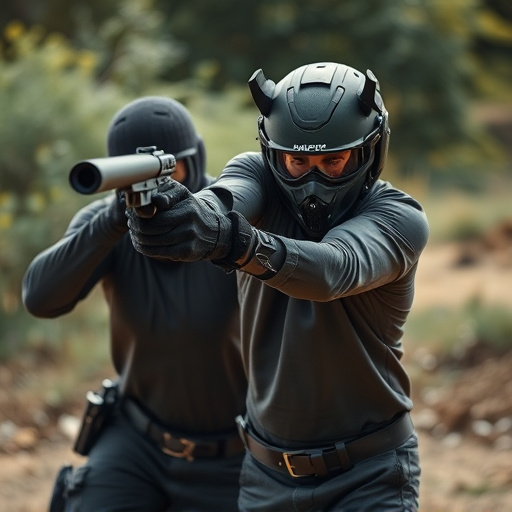
When it comes to the legality of compact stun guns with flashlight, several key factors come into play. Each state in the US has its own set of laws governing the possession and use of stun devices, with specific restrictions on size, power output, and permissible users. For instance, some states allow only law enforcement agencies and private security personnel to carry stun guns, while others have more open policies, enabling civilians to own and defend themselves.
The design and functionality of compact stun guns also influence their legal status. Devices that incorporate a flashlight feature must adhere to additional regulations related to lighting output and battery life. These considerations ensure public safety and prevent misuse, as well as promote responsible ownership. The interplay between state laws and the unique attributes of compact stun guns with flashlights is crucial in determining where and how these self-defense tools can be legally acquired and used.
Rights and Responsibilities of Citizens: What You Need to Know
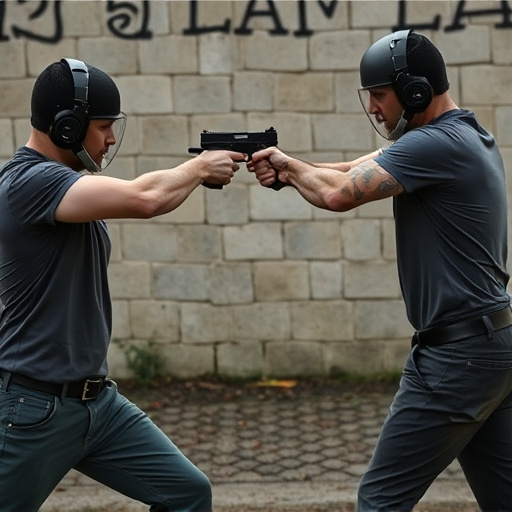
In many states, citizens have the right to carry compact stun guns with flashlights for personal protection. However, this right comes with significant responsibilities and legal restrictions. The laws vary widely from state to state, so it’s crucial to understand what your rights are in your specific location.
When carrying a stun gun, you must adhere to local regulations regarding hidden carry permits, registration, age restrictions, and prohibited locations like schools or government buildings. Additionally, using a stun gun for self-defense should be done responsibly and only as a last resort. Knowledge of de-escalation tactics and understanding the legal implications of its use are essential considerations for any citizen armed with a compact stun gun with flashlight.
Future Trends: Predictions for Changes in Stun Gun Laws
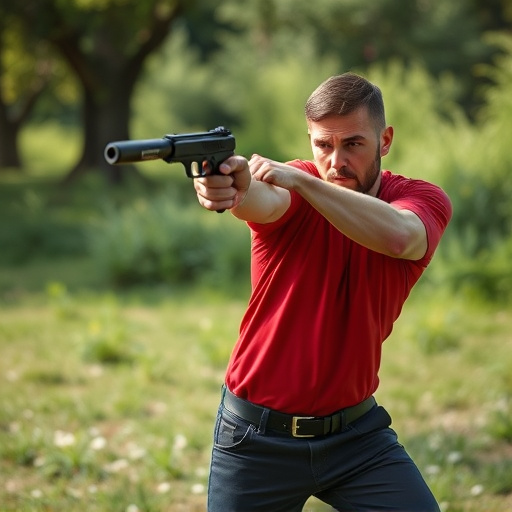
As the technology surrounding compact stun guns with flashlights continues to advance, we may see shifts in legislation across states. The increasing popularity of these devices and their perceived benefits for personal safety could lead to a reevaluation of current laws. Future trends suggest that state laws might become more uniform, potentially reducing restrictions on who can own and carry stun guns, especially as public demand for self-defense tools grows.
Proponents of liberalized stun gun laws argue that these devices offer a non-lethal means of self-protection, particularly in situations where traditional firearms are not feasible or desirable. With advancements in design, such as the integration of flashlights, compact stun guns could become more accessible to a broader range of individuals for personal safety purposes. This shift may be catalyzed by changing societal attitudes towards self-defense and the recognition of the importance of non-violent conflict resolution tools.
Understanding the legal restrictions on compact stun guns with flashlights is essential for citizens seeking self-defense options. This article has provided a comprehensive overview of the state-by-state regulations, highlighting the varied legal landscape. Key factors influencing legality, including safety concerns and public perception, play a significant role in shaping these laws. By knowing their rights and responsibilities, citizens can navigate these restrictions effectively. Looking ahead, future trends suggest potential changes driven by evolving societal needs and technological advancements, making ongoing awareness crucial for those interested in acquiring compact stun guns with flashlights.
